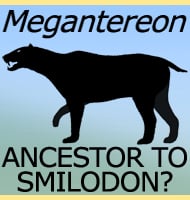Pogonodon
In Depth A little known nimravid, Pogonodon seems to have had a wide distribution from the USA to the Ukraine as well as existing for around twenty-three and half million years. This suggests that Pogonodon would have been one of the most successful genera of nimravid so far known. Further Reading Further reading- Scientific news. … Read more

